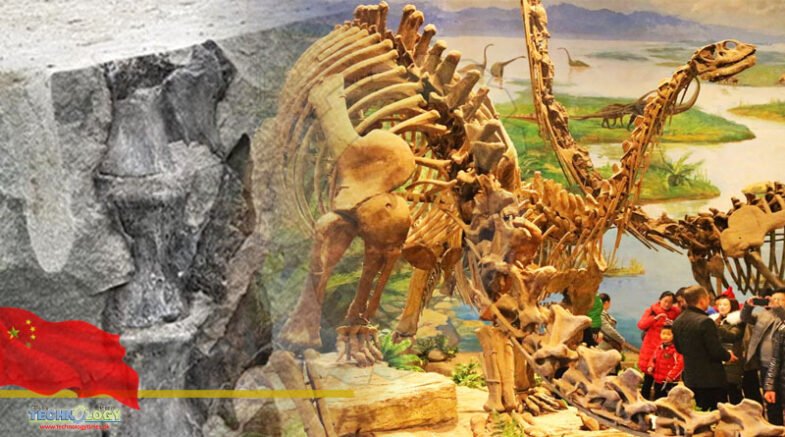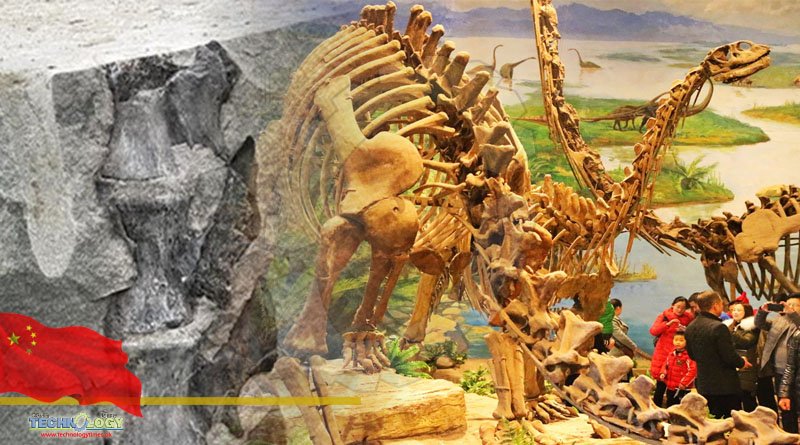A gigantic Jurassic-era dinosaur, believed to be the most pristine dinosaur fossil unearthed in Asia, was on display at the Chengdu Museum of Natural History in southwest China’s Sichuan Province.

A gigantic Jurassic-era dinosaur, believed to be the most pristine dinosaur fossil unearthed in Asia, was on display at the Chengdu Museum of Natural History in southwest China’s Sichuan Province.
The fossil, which belonged to a Mamenchisaurus, was evacuated in 1957 in Hechuan District, Chongqing Municipality, which borders Sichuan, by a team of petroleum geological exploration experts. It will be put on permanent display at the museum.
According to Ouyang Hui, a professor at the Chengdu University of Technology, the pristine dinosaur fossil found in Hechuan is over 80 percent complete and is of great research value. He added that although “lizard-hipped” dinosaurs, which were usually larger than Mamenchisaurus, have been discovered in China, their fossils are far less intact.
The fossil is now 24 meters long after a recent restoration that has extended the total number of its caudal vertebra from 35 when it was found to 55, according to the museum.
About 15 square meters of well-preserved dinosaur footprints with both positive and negative fossil slabs also have been unearthed in Shanghang County, Longyan City of east China’s Fujian Province.
The discovery of such a large area of well-preserved dinosaur imprints is rare across the globe, said experts from the national expert committee on paleontology and fossils.
The fossils contain sauropod and theropod dinosaur footprints and a clear symmetrical ripple structure which clearly represents the sedimentary environment of lacustrine facies back then. More than 30 footprints of six dinosaur species were recorded by the imprints.
The Chengdu Museum of Natural History, with about 10,000 exhibits, opened to the public. It covers about 61,000 square meters with six permanent halls displaying the geological environment, natural disasters, mineral resources, and preservation, as well as the origin and evolution of life and biodiversity. The museum will be a preeminent institution for science and culture, welcoming visitors from around the world with expansive exhibits, public spaces, shops, a café, a cinema, state-of-the-art educational facilities, and a verdant landscape that invites gathering and connection.
Originally published at English News
